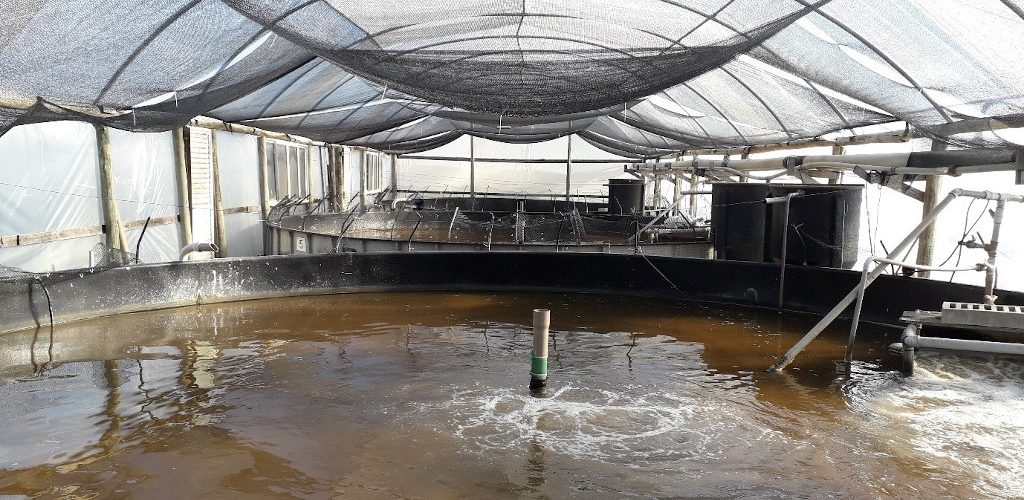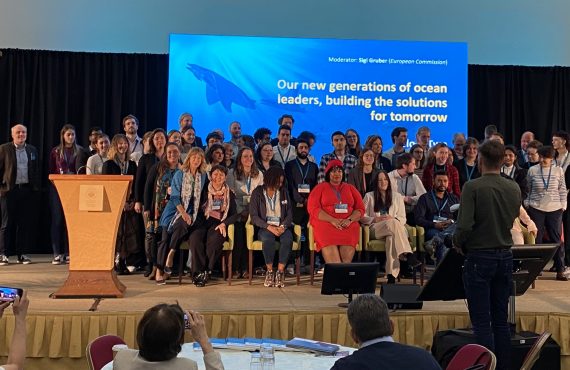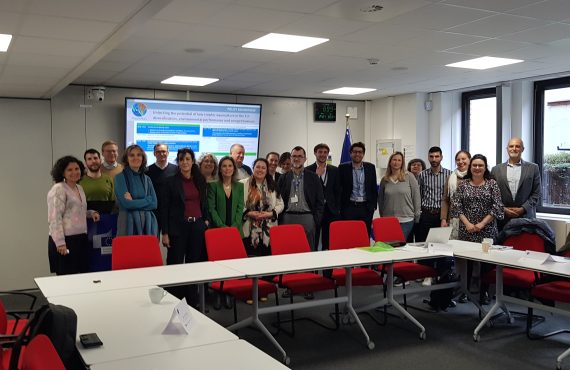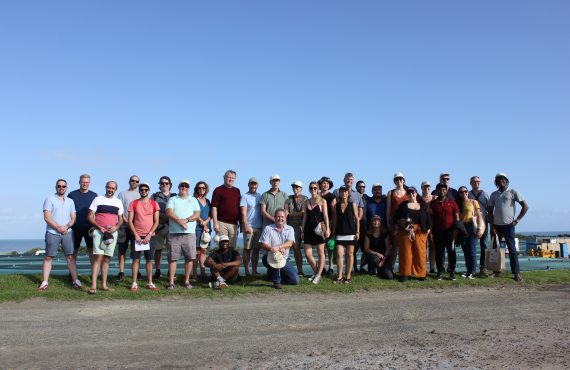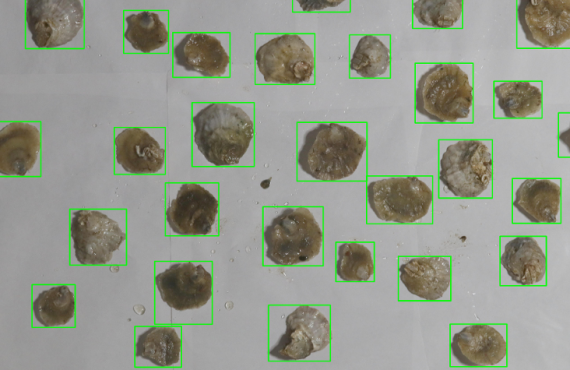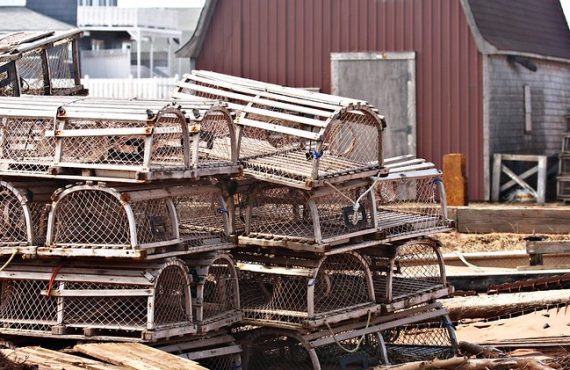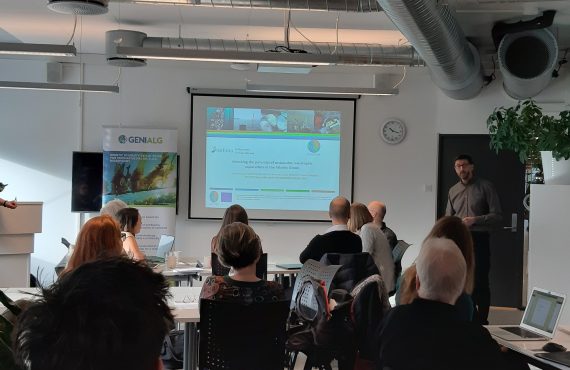Tanks for the culture of shrimp using biofloc technology at the Marine Shrimp Laboratory of the Federal University of Santa Catarina (UFSC), Florianópolis, Brazil. Photo by Mateus Aranha Martins
By Mateus Aranha Martins, undergraduate student of Aquaculture Engineering at the Federal University of Santa Catarina (UFSC).
In order to meet increasing demands for seafood, there has been an ongoing process of intensification in aquaculture, consisting of increasing stocking densities in order to obtain greater yields. However, this has led to environmental problems related especially to the discharge of nutrient-rich waters—effluents—to natural water bodies due to the use of water exchange to maintain a good water quality for the animals being cultured.
Biofloc Technology (BFT)
The biofloc technology (BTF) is an alternative to the use of water exchange in order to maintain good water quality in intensive aquaculture. Biofloc takes advantage of microorganisms present in the culture water itself to remove the toxic compounds that are excreted by shrimp and fish. This solves the problem of the excessive use of water and the discharge of large volumes of effluents. However, there are two major issues with this technology associated with the fact that aquatic animals recover a low percentage of the nutrients provided to them through feeding:
– the accumulation of suspended organic matter and largely non-toxic inorganic dissolved substances (e.g. nitrate).
– this represents a waste of resources that were not used by the cultured animals for growth.
Integrated Multitrophic Aquaculture (IMTA)
Although the accumulation of unrecovered nutrients occurring in BFT in the form of suspended organic matter and inorganic dissolved substances may at first appear to be only a problem, they can also be viewed as an opportunity in the light of the Integrated Multi-trophic Aquaculture (IMTA) strategy. This approach consists of recycling the residues of the culture of one species as a source of nutrients for other species. At the Marine Shrimp Laboratory of the Federal University of Santa Catarina (UFSC), we already demonstrated in previous studies that the use of fish (Nile tilapia) to feed on the suspended organic matter resulting from the culture of marine shrimp increased the recovery of nutrients (https://doi.org/10.1016/j.aquaculture.2018.08.045), demonstrating that IMTA is a promising approach to deal with the issues of BFT.
Cultivation of seaweeds using biofloc effluent
Seaweeds, such as those of the genus Ulva, are potential choices to be used in integrated systems in BFT, as they can take advantage of the inorganic dissolved substances that accumulate in the culture unit, in addition to the fact that they have great economic importance. For example, they can be used for human and animal consumption and for the extraction of biologically active substances, such as ulvan, a sulfated polysaccharide from green seaweed. However, there are still many challenges to their use, such as which species is best and what are the optimal culture conditions for any given species. With this in mind, we at the Marine Shrimp Laboratory performed a study in order to evaluate two aspects of seaweed cultivation using effluent from a biofloc rearing system: different species and stocking density (https://doi.org/10.20950/1678-2305.2020.46.3.602).
Experiments: Different seaweed species and stocking density in a biofloc rearing system
For the first experiment, we collected two seaweed species from different locations at the city of Florianópolis, SC, Brazil: Ulva ohnoi was collected from brackish water lagoons and U. lactuca was collected from the sea, in the intertidal zone. After acclimation, the algae were stocked in 60 L tanks located in a greenhouse which were filled with a mixture of seawater and effluent from a biofloc shrimp rearing tank as a source of nutrients. This mixture was changed weekly and the experiment lasted 3 weeks.
Briefly, U. ohnoi was the best performing species. While its biomass almost doubled throughout the culture period, U. fasciata exhibited a decrease in its biomass. These results led us to the second experiment, in which we evaluated two stocking densities of U. ohnoi under the same experimental conditions. We found that the lowest stocking density proved to be more efficient, as it resulted in greater growth rates when compared to the highest density.
Final considerations
Despite the many challenges faced throughout our study, such as collecting the algae at the beach under stormy weather and having to deal with undesirable crustaceans that ate on the seaweeds, our results are promising in optimizing two aspects of cultivating algae in integrated systems, namely, species and stocking density. Still, there are more questions to be answered by future studies, such as potential applications of the species and its reproduction under a controlled setting to prevent the aforementioned problem of undesirable organisms.
Tanks for the culture of shrimp using biofloc technology at the Marine Shrimp Laboratory of the Federal University of Santa Catarina (UFSC), Florianópolis, Brazil, and experimental set up used for the cultivation of the seaweed Ulva ohnoi under two stocking densities using effluent from a shrimp biofloc rearing tank. Photos by Mateus Aranha Martins.
Full recording of the webinar “Advances in IMTA & Biofloc. Research at UFSC” (17 Dec 20). Mateus Aranha Martins presentation, minute 17′.



